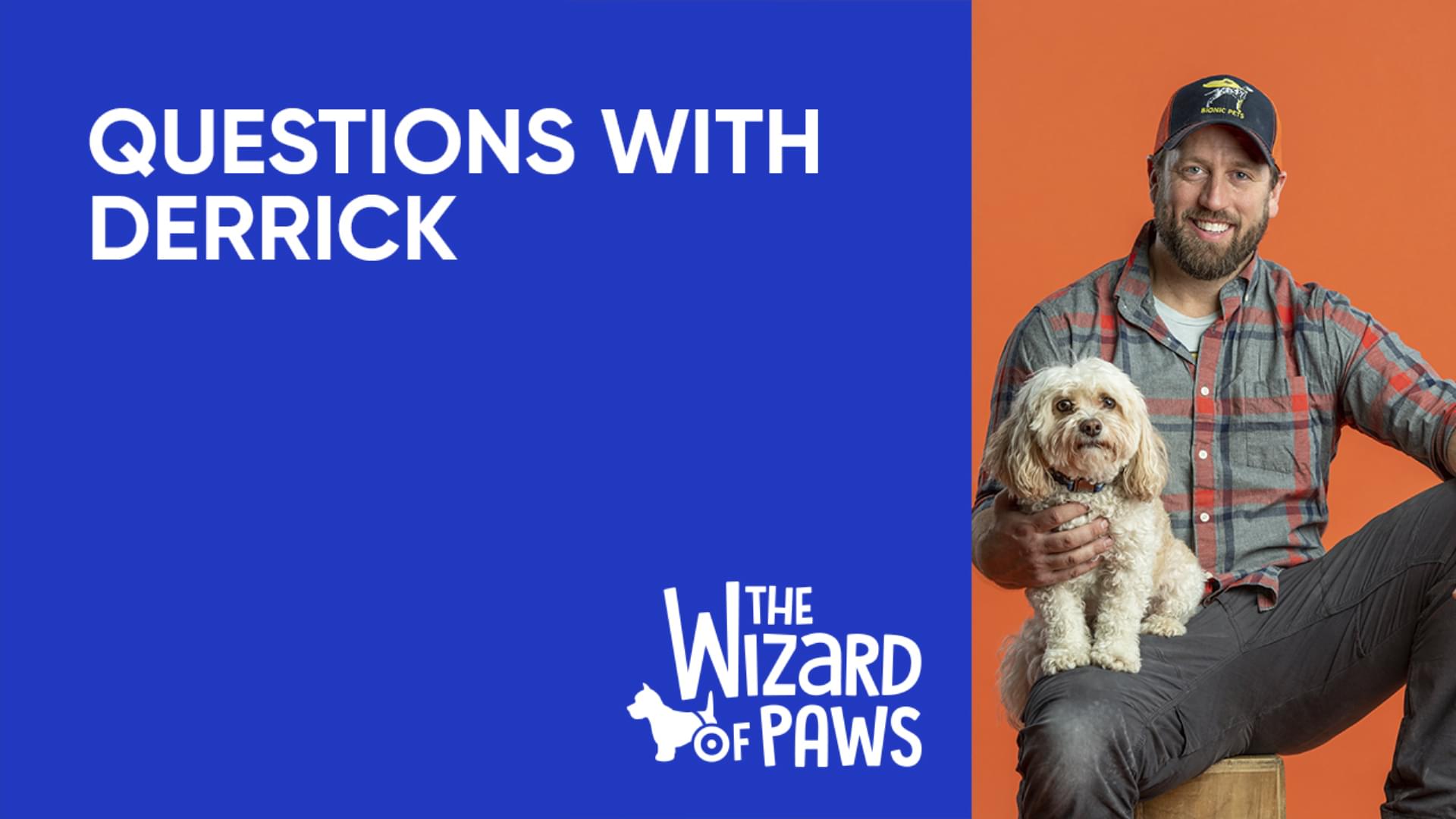Questions with Derrick
Prosthetics for paws, hooves, claws, and limbs of all sorts is the magic worked by Derrick, the certifiable Wizard of Paws.
Learn all about his prep and casting process for the devices he makes in the interview below.
Derrick: Hi, my name is Derrick from the Wizard of Paws, and I'm gonna show you a few steps today on how we make these prosthetics.
Prosthetics Show & Tell
Derrick: This is a 3D scan of a dog named Derby, one of the first three printer prosthetics in the world—congenital deformities. We go through this process to be able to build these really cool prosthetic devices.
One example of how crazy some of these prosthetics can get—we'll get some big animals, so cow prosthetics. I went to England, casted this cow. This device actually kicks his leg forward. It's a pretty cool device here. So we're talking small animals, large animals, all the way to some of these full-limb 3D printed devices.
This is actually something where a dog is missing his entire limb, and we're replacing it. So we're doing a whole body, full-limb prosthesis there—to partial limbs, where a dog is missing part of his leg, and we're making this cool pink prosthetic for this one. This goes right onto his stump, and he can walk and use all fours. To even things like horse braces—horses go down on the track and you encapsulate their leg. And I made this really cool kind of Boa enclosure system, so it's kind of like a fracture brace for horses.
Process for Making Prosthetics
Derrick: So here at Bionic Pets, we start with a negative mold. We ship casting kits all over the world, or patients come to our office here in Sterling, Virginia. We take a cast of their leg or lack thereof.
From here, we take this mold, we actually fill it with plaster of Paris. We seal it and we fill it in this sand bucket. From there it turns into a positive mold, which is right here. These are all filled with plaster.
I literally take these molds, I strip them, I hand sculpt them, and then we turn them and add plaster and make that positive mold. From there, what we do is we heat up plastics, we heat up foams, we stick them in our oven, we vacuum form everything right over them, cut them, sand them, grind them, and strap them up, get them out, and ship them all over the world.
Tools Used in the Process
Derrick: Now I'm going to be talking about some of the tools that are needed in the process of making prosthetics and orthotic devices for animals.
We send a casting kit out all over the world to veterinarians or animal owners if they can't come to our office here locally in Virginia. And what that is is it's a fiberglass casting material. You'll wrap an animal’s leg, big, small, and they'll send that cast back to us.
From there, we use plaster of Paris to fill these molds. I'll take all these different smoothing devices to hand sculpt every single mold, and from there we get what's called a positive mold.
That positive mold is taken to our vacuum forming station. We stick it into a vacuum forming table, we heat up plastics, we heat up foams, and we vacuum form all of those pieces over these positive molds to get kind of just this plastic shape over the positive mold.
Then we’ll use a cast saw and cut out these positive molds and the plastic that's draped over. We'll use our Trautman, which is this huge grinder, and we'll grind out all the plastic pieces. We'll put the componentry on, which are different kinds of joints, and we'll put straps on there.
From there, we'll ship them out all over the world to each individual patient in need.
Watch Wizard of Paws
Wizard of Paws will be here soon. In the meantime, watch the special sneak peek below to meet some of the animals Derrick works with.



